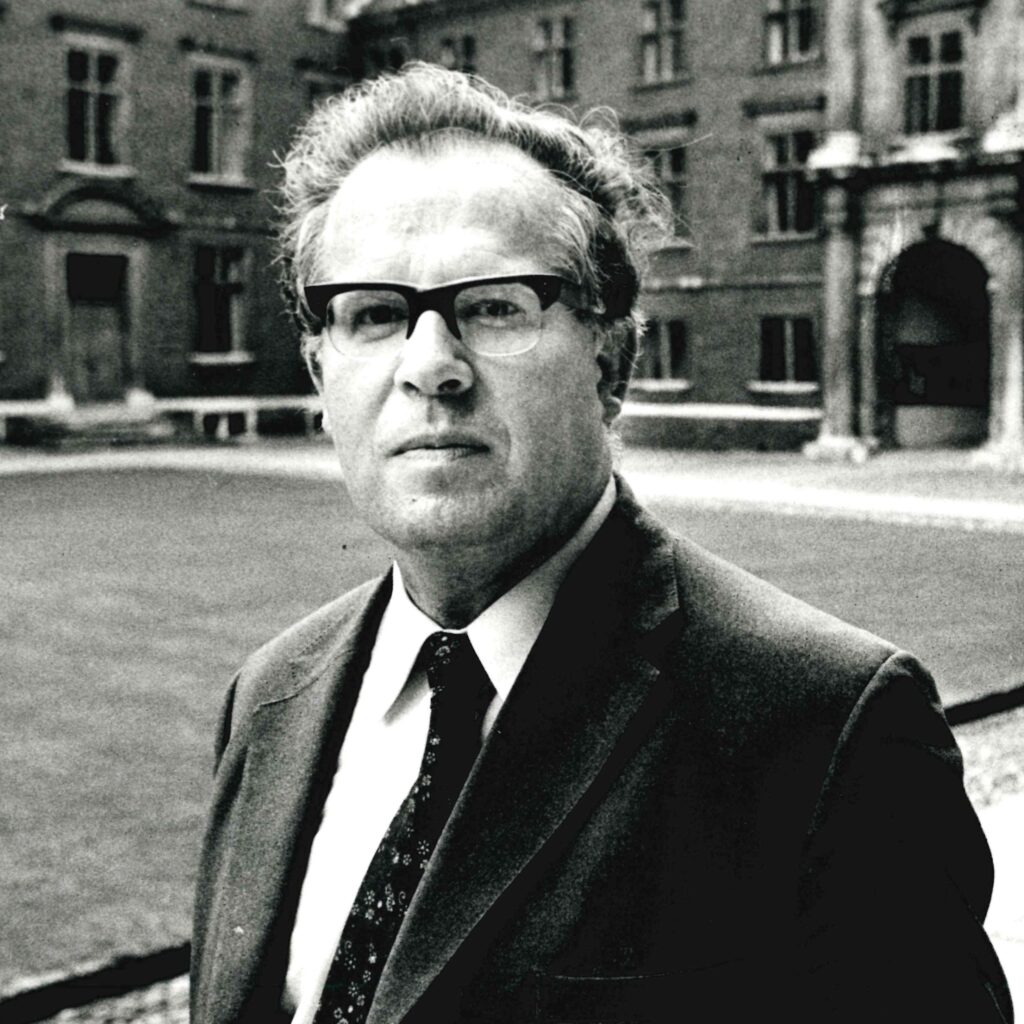This conjecture connects the rank of the group of rational points to the number of points on an elliptic curve mod p and is backed up by a wealth of experimental evidence. Elliptic curves are essential mathematical objects that appear in numerous contexts, including Wiles’ demonstration of the Fermat Conjecture, the factorization of numbers into primes, and cryptography, to name just three. Elliptic curves are described by cubic equations in two variables.


Bryan John Birch
Professor Sir Peter Swinnerton-Dyer


Early History
Problems on curves of genus 1 feature prominently in Diophantus’ Arithmetica. It is easy to see that a straight line meets an elliptic curve in three points (counting multiplicity) so that if two of the points are rational then so is the third. In particular, if a tangent is taken at a rational point, then it meets the curve again in a rational point. Diophantus implicitly used this method to obtain a second solution from a first. He did not iterate this process, however, and it was Fermat who first realized that one can sometimes obtain infinitely many solutions in this way. Fermat also introduced a method of ‘descent’ that sometimes permits one to show that the number of solutions is finite or even zero.
One very old problem concerned with rational points on elliptic curves is the congruent number problem. One way of stating it is to ask which rational integers can occur as the areas of right angled triangles with rational length sides. Such integers are called congruent numbers.
Recent History
It was the 1901 paper of Poincare that started the modern theory of rational points on curves and that first raised questions about the minimal number of generators of C(Q). The conjecture itself was first stated in the form we have given
in the early 1960s. It was found experimentally using one of the early EDSAC computers at Cambridge. The first general result proved was for elliptic curves with complex multiplication. The curves with complex multiplication fall into a finite number of families including {y2 = x3 − Dx} and {y 2 = x3 − k} for varying D, k ≠ 0. This theorem was proved in 1976 and is due to Coates and Wiles. It states that if C is a curve with complex multiplication and L(C, 1) ≠ 0, then C(Q) is finite. In 1983 Gross and Zagier showed that if C is a modular elliptic curve and L(C, 1) = 0 but L0 (C, 1) ≠ 0, then an earlier construction of Heegner actually gives a rational point of infinite order. Using new ideas together with this result, Kolyvagin showed in 1990 that for modular elliptic curves, if L(C, 1) ≠ 0
Rational Points on Higher-Dimensional Varieties
We began by discussing the diophantine properties of curves, and we have seen that the problem of giving a criterion for whether C(Q) is finite or not is only an issue for curves of genus 1. Moreover, according to the conjecture above, in the case of genus 1, C(Q) is finite if and only if L(C, 1) ≠ 0. In higher dimensions, if V is an algebraic variety, it is conjectured that if we remove from V (the closure of) all subvarieties that are images of P1 or of abelian varieties, then the remaining open variety W should have the property that W(Q) is finite. This has been proved by Faltings in the case where V is itself a subvariety of an abelian variety.
This suggests that to find infinitely many points on V one should look for rational curves or abelian varieties in V . In the latter case we can hope to use methods related to the Birch and Swinnerton-Dyer conjecture to find rational points on the abelian variety. As an example of this, consider the conjecture of Euler from 1769 that x4 +y4 +z4 = t4 has no non-trivial solutions. By finding a curve of genus 1 on
the surface and a point of infinite order on this curve, Elkies found the solution 26824404 + 153656394 + 187967604 = 206156734.
His argument shows that there are infinitely many solutions to Euler’s equation. In conclusion, although there has been some success in the last fifty years in limiting the number of rational points on varieties, there are still almost no methods for finding such points. It is to be hoped that a proof of the Birch and Swinnerton Dyer conjecture will give some insight concerning this general problem.
Conjecture (Birch and Swinnerton-Dyer)
The Taylor expansion of L(C, s) at s = 1 has the form L(C, s) = c(s − 1)r + higher order terms with c ≠ 0 and r = rank(C(Q)).




